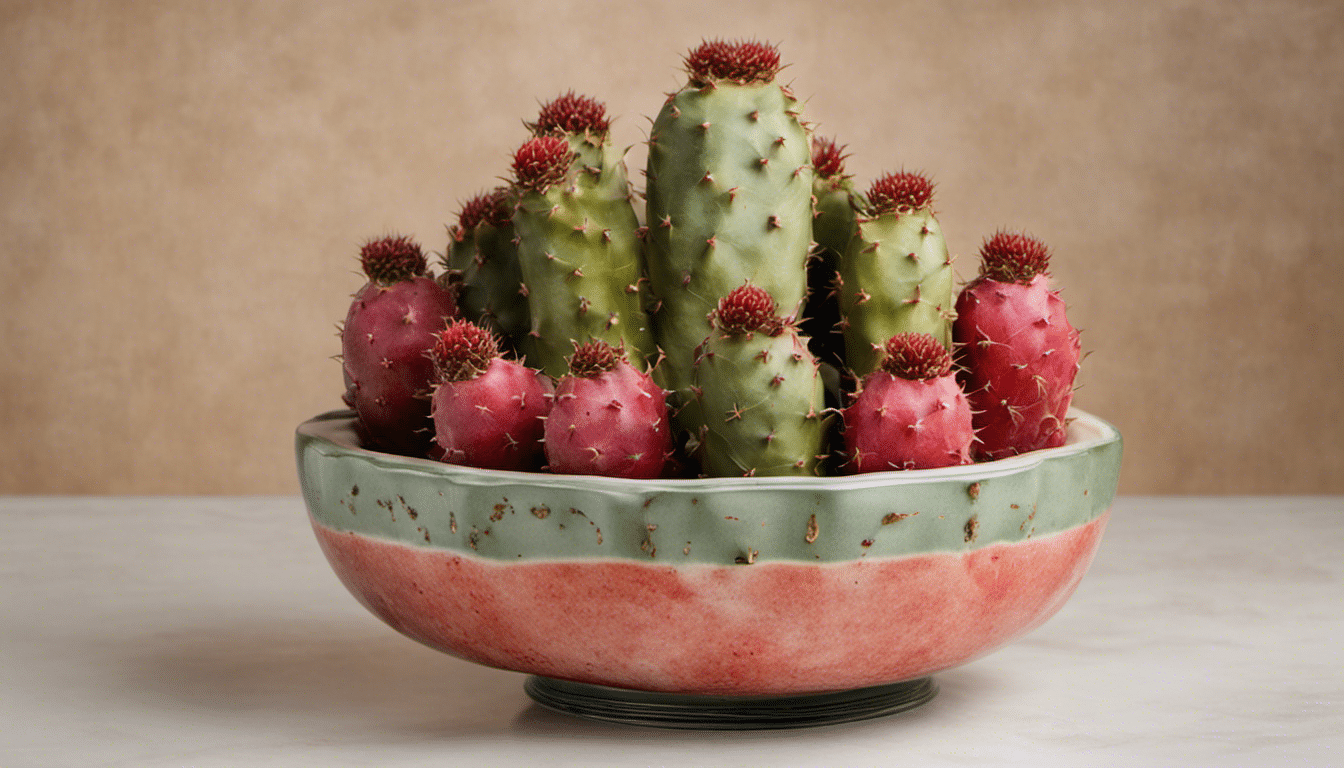All About Cactus pears
Originating from cactuses dominating the landscapes of Mexico, Southwestern U.S., Mediterranean region and parts of Africa, the cactus pears, also known as prickly pears, captivate the palate’s curiosity with its unique taste and texture. Bursting with a plethora of health benefits, this vibrant and delightful fruit has been enjoyed by various cultures for centuries.
An Overview of Cactus Pear
The cactus pear, belonging to the Opuntia genus of Cactaceae family, is often noted for its unusual paddles and beautiful blooms. Despite its thorny exterior, the reward of sweet, watermelon-like flesh awaits those who dare to peel this exotic fruit. Its taste is a fascinating blend of watermelon and bubblegum flavors, but with a slightly grainy texture due to its small seeds.
It comes in a variety of hues, from green and yellow to pink and red, with each color representing a unique variety. While it can be consumed fresh, the cactus pear is also frequently used in jellies, juices, salads, and even main dishes.
Nutritional Profile of Cactus Pears
As much as it’s tantalizing to the taste buds, the cactus pear is equally rewarding nutritionally. It is rich in dietary fiber, aiding in digestion and promoting a feeling of fullness, thus combating overeating and weight gain. This unusual fruit is brimming with vitamin C, ensuring a healthy immune system, and vitamin A, crucial for good eye health.
Besides these, cactus pears contain calcium, essential for bone health; magnesium, known to support heart health; and tiny amounts of other beneficial nutrients like iron, vitamin E, and B-vitamins. Most interestingly, cactus pear is endowed with considerable amounts of antioxidants – compounds that can combat harmful free radicals in the body. Scientific studies have illuminated the fruit’s potential in reducing oxidative stress, thereby potentially lessening the risk of chronic diseases.
Health Benefits of Cactus Pear
Among the diverse benefits of consuming cactus pear, its ability to aid in diabetes management invites utmost attention. Multiple researches suggest that cactus pear can help regulate blood sugar levels due to its high fiber content and hypoglycemic properties.
Additionally, it has anti-inflammatory properties that could assist in alleviating symptoms in conditions such as arthritis. The antioxidants present are believed to have cancer-fighting potential and the fiber content could enhance digestive health.
Moreover, the fruit’s vitamin C content can bolster the immune system and collectively, its rich composition can contribute to improved overall health and well-being.
Adding Cactus Pears to Your Diet
While you can enjoy cactus pears by merely peeling them and savoring their fresh, juicy interior, they can also be incorporated in various recipes. They’re a tasty addition to fruit salad or can be blended into smoothies and juices. With some creativity, they can even add a unique twist to salsas or be used as a topping for yogurt and desserts.
Incorporating cactus pear into your diet might necessitate acquired taste and patience, but it is a culinary and nutritional adventure worth undertaking. This unique fruit not only stands as a testament to Mother Nature’s capacity to cultivate life in the most arid lands, but vividly mirrors the vibrancy, resilience, and beauty inherent in such locales.




